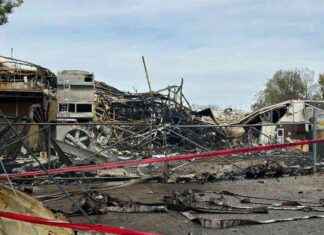25 years ago an image shook Spain, that of the Burgos prison official José Antonio Ortega Lara. A man 50 pounds lighter than he was at the beginning of his captivity, emaciated and frightened. He had been released after 532 days locked up in a cell blocked by a mechanism that opened the expertise of agent Miguel and a “bit of luck.”
Miguel and his partner Carlos belonged to the Special Intervention Unit (UEI) of the Civil Guard and on July 1, 1997 they were 36 and 33 years old, respectively.
A date that they will not forget because that day the armed institute put an end to another of the ordagos that the terrorist group wanted to throw at the State with kidnappings such as Ortega Lara or those of businessmen Cosme Delclaux and José María Aldaya, the three coincident in time .
Miguel and Carlos have spoken with Efe about that moment, when the first discovered the hydraulic system that closed the wooden cellar, wet and cold, barely three meters long, two meters wide and 180 centimeters high, in which Ortega Lara suffered his captivity.
Both recognize the difficulty involved for the agents -500 civil guards were mobilized- to free the prison official and, modestly, share with a “pinch” of luck the merit of having located the hydraulic system that opened the hatch.
January 17, 1996. Ortega Lara, born in 1959, is approached in the garage of his home in Burgos, when he returns from his job in the Logroño prison, by three ETA members who put him in the trunk of his car and then transported in a truck, hidden in a specially prepared machine, to a dump in an industrial warehouse in Mondragón (Gipuzkoa).
The next day, they find his abandoned car in the Gamonal industrial estate in Burgos. His glasses were in the trunk.
Three days after his disappearance, ETA claimed responsibility for the kidnapping in a telephone call to the Egin newspaper and on February 1 the terrorist group assumed responsibility for this action in a statement.
During the kidnapping, ETA sent that newspaper photographs of the official to show that he was in good condition and even Egin himself published a letter handwritten in capital letters by Ortega Lara in which he asked his colleagues to stop mistreating the prisoners of the band, and the Government, to negotiate. In addition, he claimed to receive proper treatment.
Meanwhile, mass demonstrations in support of the hostage took place in Spain. They were months of hope -on April 14 the gang freed Gipuzkoan businessman José María Aldaya after 341 days in captivity- and of despair because the days passed, the official was still captive and ETA continued to carry out kidnappings, such as that of Cosme Declaux, son of a prominent Biscayan businessman, on November 11 of that year.
The Civil Guard had a hard time finding the clue that led to the confinement ship, but then they did not abandon it.
They were days and nights watching in a hostile situation. All precautions were few. Not only because they had to avoid being seen by the people who could work in the polygon, but because of the orography itself, the humidity of the river on which the ship was located or the steepness of the terrain.
There was hardly any movement in the ship. Only two people went in and out of it.
But the Civil Guard was convinced that Ortega Lara was there. Before his release, the agents arrested the four ETA members responsible for the kidnapping, one of whom, Jesús María Uribeetxeberría Bolinaga, was transferred to the jail.
Coordinated by the then judge of the National High Court, Baltasar Garzón, the Dolphin-Octopus operation was launched with 500 civil guards due to the difficulty in finding the hiding place, hidden under a heavy machine. Meanwhile, Bolinaga denied that the hostage was on the ship.
“I was lucky to find access” to the dump, recalls agent Miguel in a telephone conversation with Efe.
This civil guard, who like his colleagues worked all night to free the official from the Logroño prison, was struck by the fact that the support foot of a hydraulic winch was fixed to the ground, when it should be mobile.
Miguel had worked in a workshop and was surprised that the lathe could not move. Therefore, suspecting that he was hiding a hole, he began to remove the screws along with other colleagues and lifted the lathe from the ground.
A heavy “plug” (about a thousand kilos) -the terrorists moved it with an electrical mechanism- that required many hands and managed to expose the small hole through which an agent had to enter face down.
There he discovered Ortega Lara, who, convinced that the civil guard was a terrorist, only managed to say: “Kill me once and for all.”
In a lamentable state, with 23 kilos less and evident signs of having suffered fevers, diarrhea and fungus in those more than seventeen months, Ortega Lara came to the surface.
Miguel remembers “his face of exhaustion”, but also the joy he felt because finally everything went well for everyone.
Carlos also entered the ship and contributed to the release of a man whose image has been engraved on him, because “it shocks”.
He recalls that it cost more to locate the entrance to the dungeon than to enter the ship, and he emphasizes the “very intense and conscientious” work that he and his companions had to carry out.
“There was some luck because the system was quite successful. It was not easy without a bit of luck,” adds this agent.
ETA had lost a new battle against the Civil Guard.








